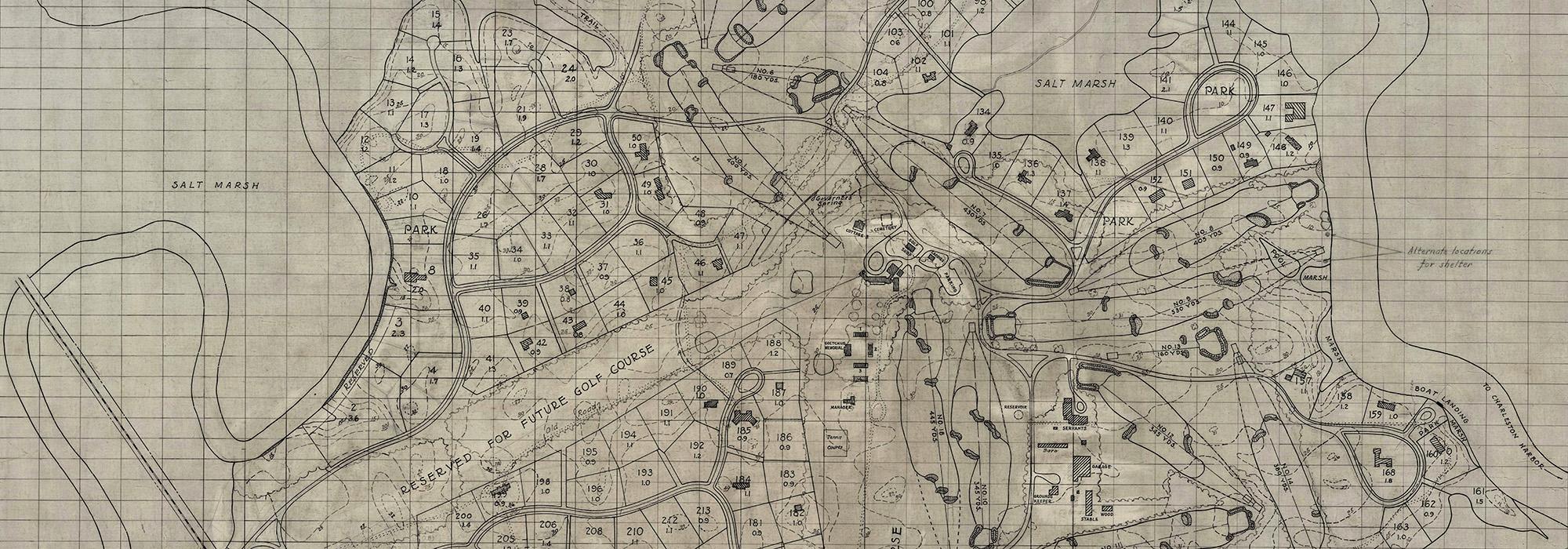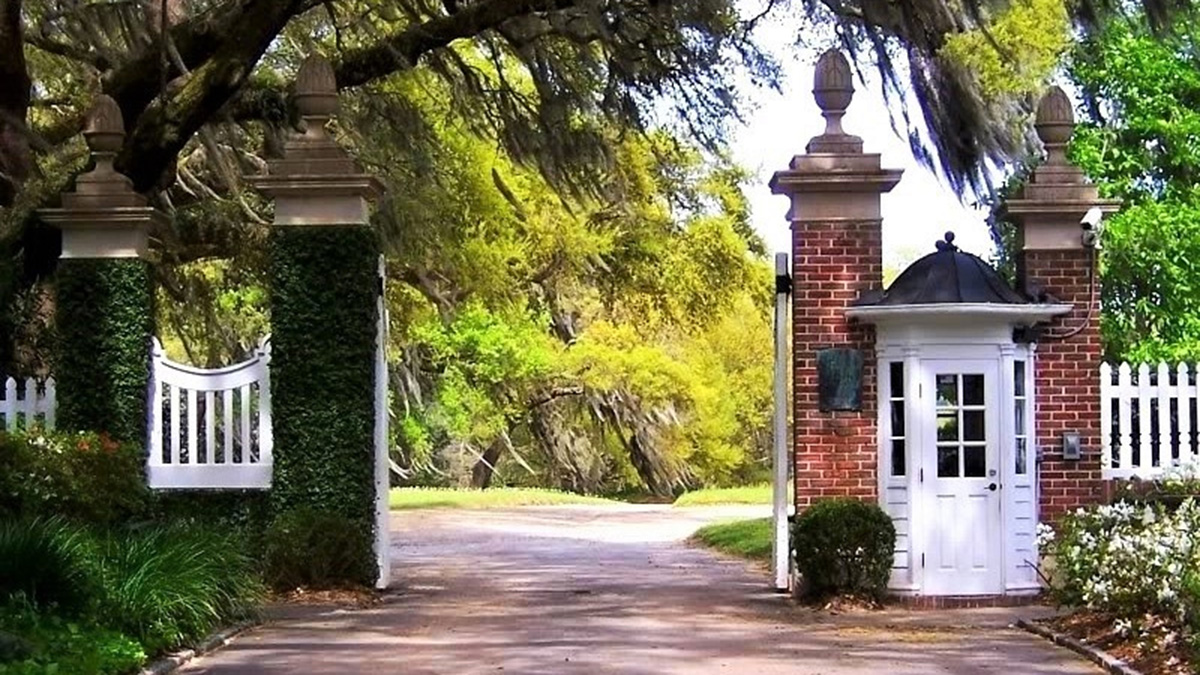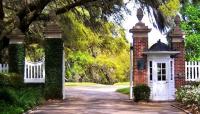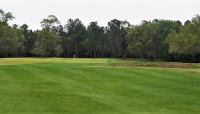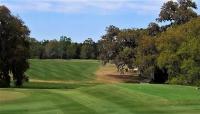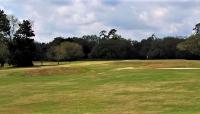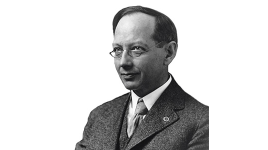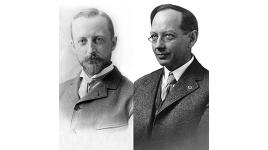Landscape Information
Located just twelve miles from Charleston, this rolling wooded landscape, intersected by the Cooper River and populated by live oaks, magnolias, hickories, hollies, and willows, held great appeal for a tourist development at the turn of the twentieth century. Inspecting the ground in 1915 at the request of Charleston developer E. W. Durant, Frederick Law Olmsted, Jr., praised the topography and vegetation, fortified with ample fresh water from two springs, as well-suited for a golf course with diverse cottages tucked along the edges and sites for other outdoor amusements.
By 1923 development of the general layout for house sites, roads, small parks, and other amenities began under William Marquis of Olmsted Brothers, collaborating with golf architect Seth Raynor. Both designers ensured long vistas while retaining ample property screening. Olmsted firm plantsman Hans Koehler diversified the native vegetation, inserting azaleas and camellias as understory. Architect James Gamble Rogers’s Southern Colonial design for the clubhouse ran into opposition from preservation groups and club members, as it involved destruction of the remains of Yeamans Hall, a ruined mansion of English brick from which the golf club would take its name, built by Sir John Yeamans after he received a land grant from King Charles circa 1670. By 1928 a clubhouse was built, incorporating a portion of a corner wall from the historical ruin.
Planned development of 200 house sites suffered a severe setback with the Depression. Maintaining consistent aesthetic oversight for both overall design and that of individual properties was a continuing struggle. Olmsted Brothers retained its advisory capacity until the late 1940s, when it counseled that management of surrounding woodlands for their landscape value was more critical than unprofessional timbering.
In 1996 the eighteen-hole golf course was restored by Tom Doak. Today, Yeamans Hall is a membership country club with a challenging golf course and an enclave of private homes.



